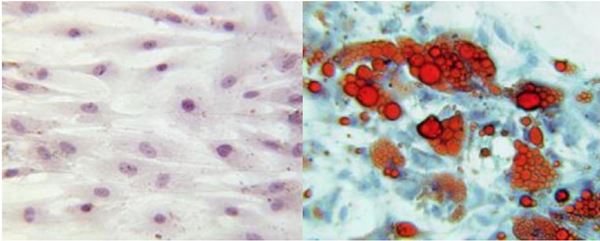Reposted from the National Institute on Aging's blog, by Manuel Moro, PhD, Health Scientist Administrator in the NIA's Division of Aging Biology.
How do you study the cellular and metabolic activities associated with aging if you’re using cells from healthy younger adults? With great difficulty.
Cells change as we age. Cell function in a 21-year-old is different from that of a 71-year-old. Understanding that aging cells would be critical to aging research, one of NIA’s first tasks as a new Institute in 1974 was to establish a repository to obtain, characterize, store, and distribute cell lines for studies on the biology of aging.
The NIA Aging Cell Repository is located at the Coriell Institute for Medical Research in Camden, New Jersey, where it provides biological samples from older animals and people to researchers investigating the science behind aging. Cells and DNA samples are collected using strict diagnostic criteria and banked under high-quality standards of cell culture and DNA purification. Scientists from more than 40 countries have used the highly characterized, viable, and contaminant-free cell cultures from this collection for cellular and molecular research on the biology of aging.
Examples of potential uses: Cells from young and old mice can be compared to determine specific differences in how they harvest energy, make new proteins, and dispose of waste. DNA collected from octogenarians, nonagenerians, and centenarians can be used to search for potential biomarkers of aging in people.
The current NIA collection consists of more than 2,700 cell lines and 700 DNA samples from animals and people. The samples include cell lines and DNA from individuals across all age ranges, as well as cell lines for certain age-related diseases, such as Alzheimer’s disease and Parkinsonism. The collection also includes samples representing diseases which cause premature aging, such as progeria and Werner syndrome.
Among the collections available for researchers are:
You can order samples directly from the Coriell Institute. The Institute ships an average of 1,200 cell cultures and over 400 DNA samples or panels from the aging cell bank each year. About 90 percent of the shipments go to investigators at academic, nonprofit, or government institutions; at present, cells and DNA are available to these institutions at no cost. Instructions for ordering cells and additional information on pricing is available at https://www.coriell.org/1/NIA/How-to-Order/Ordering.
A complete catalog of cell lines and additional information are available at: http://www.coriell.org/1/NIA. If you have specific questions about the Aging Cell Repository, cell collection, or protocols, please comment below or send an e-mail.

Adipose stromal cells cultured from the arm of a 61-year-old woman in control medium (left) and in differentiation medium (right) stained with Oil Red O after the differentiation period for detection of lipids. Adipose cells secrete hormones that may influence energy metabolism. Studying these cell types may help to understand factors involved in diabetes, obesity, and the aging process. (Image courtesy of Coriell Institute for Medical Research)